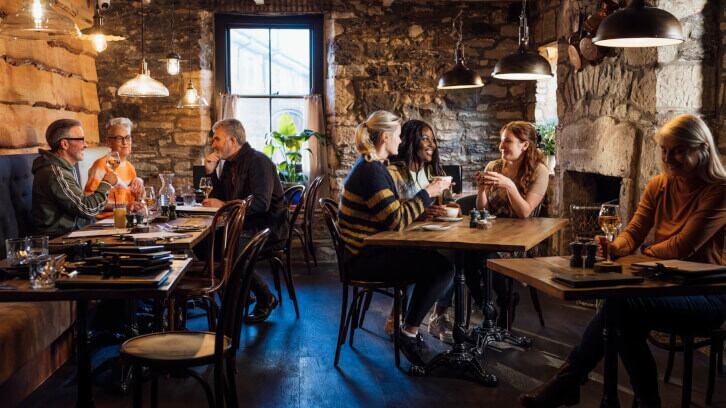The latest Hospitality Market Monitor showed a 0.4% decline in the total number of closures between the start of January and the end of March—the third smallest quarter-on-quarter drop since the start of the pandemic.
According to the research, there were 98,745 hospitality venues in the UK as of March, which was down 2.5% year-on-year, meaning one in 40 venues shut in the past 12 months.
However, the latest three-month snapshot provided “cautious confidence” that a slight easing of cost pressures may be starting to put the brakes on business closures.
CGA by NIQ director Karl Chessell said: “After a very challenging few years, these numbers give grounds for tentative optimism that hospitality closures will slow as 2024 goes on.
“While thousands of businesses remain fragile, a downward trend in inflation should hopefully raise the confidence of operators, consumers and investors alike, and protect more venues from closing the doors.
“It is particularly encouraging to see a marginal return to new openings for both casual dining and independent restaurants, though sustained growth is likely to be some way off.”
The monitor, which tracks opening and closure rates on a quarterly basis, showed positive trends in the eating-out side of the market with food-led site numbers having increased by 0.1%, compared to drops of 0.7% and 0.4% in drink-led and accommodation businesses.
This marginal growth was “driven by a modest revival for casual dining and independent restaurants”, the research indicted, though these two segments recorded a combined net decline of 21% of sites between the start of the pandemic in March 2020 and December 2023.
Figures stabilising
However, they appear to have stabilised and achieved 0.5% growth in the first quarter of 2024.
Nevertheless, despite improving trends, the independent restaurant segment remains “vulnerable”, with a 22% decline between March 2020 and December 2023.
AlixPartners managing director Graeme Smith said both the economy and hospitality sector had been “impacted” by many different factors in the past three years, including inflation and a “longer-than-anticipated” recovery period from the period.
Smith continued: “This has been visibly illustrated by hospitality openings and closures.
“These headline rates have always been among the most meaningful proxy for assessing the overall health of the industry and the operating climate.
“While the number of venues continues to tick down overall, the rate has slowed significantly, and hopefully this a further sign of the easing of some of these big market pressures. Operating conditions are clearly not easy, but the volatility of recent years has calmed.”
Another “key indicator” for the market, Smith added, was the “building momentum” in M&A activity across the sector as pressures begin to ease and interest rates stabilise.
The report also detailed a “resilient” start to 2024 for managed multi-site hospitality groups, while the independent and leased segments of the market contracted by 0.4% and 0.7% respectively in the first quarter.
Still too many
Furthermore, numbers in the managed channel remined virtually level with December 2023, according to the data.
Some groups were forced to close sites in early 2024, but many vacated premises have since been re-occupied by new operators.
However, reacting to the figures, chief executive of trade body UKHospitality, Kate Nicholls stated four hospitality venues closing a day was “still four too many”.
She said: These closures rob communities of all the benefits hospitality serves up for Britain – the crucial job opportunities, local economic growth and hubs for communities.
“However, this data gives some signs to suggest the sector is beginning to recover. A slight growth in both casual dining and independent restaurants indicates a potential growth in an appetite for investment in the sector.
“While nascent, these are positive signals, albeit at a time when the sector continues to face tough economic challenges, which continue to put at risk the many benefits hospitality delivers to Britain.
“The closure rate may have halved, but we’re still losing venues and that is not acceptable. It remains the case that the cost burden for the sector is too high, and we need to see those costs rebalanced and reduced, if we are to build on some of the growth we are seeing.”




